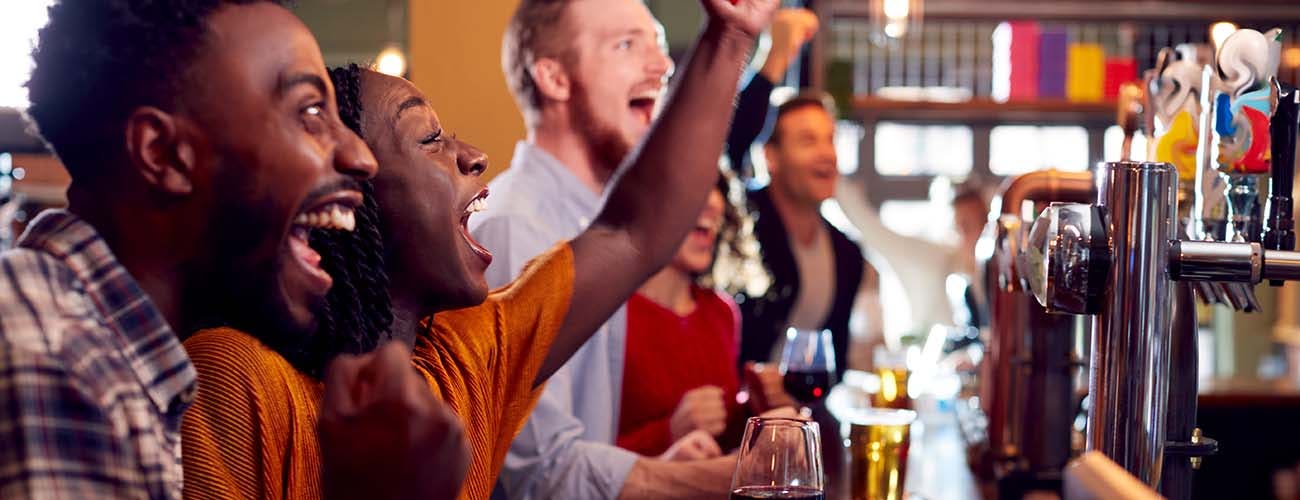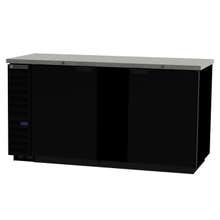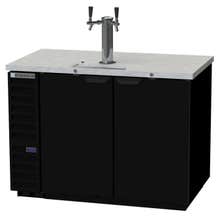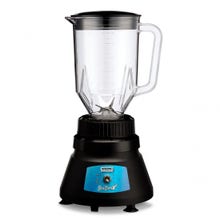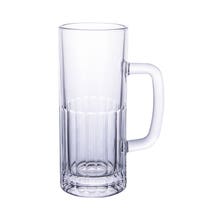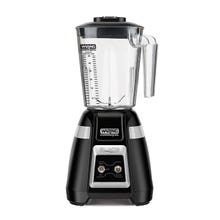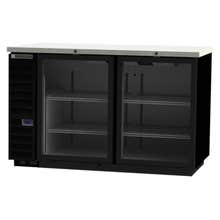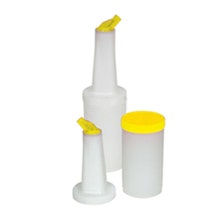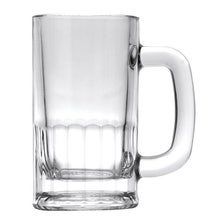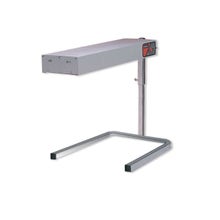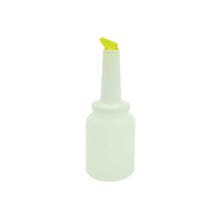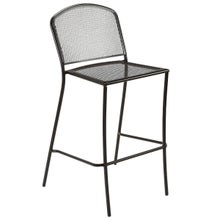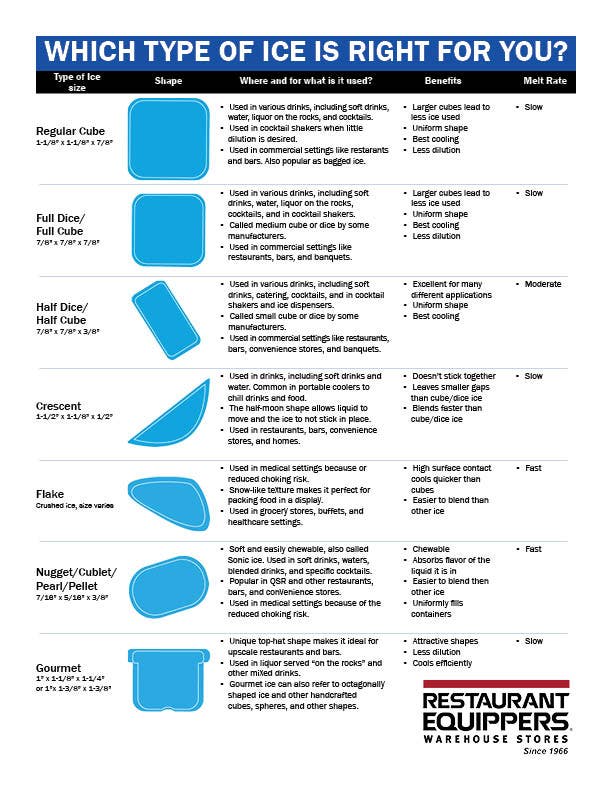The Ultimate Bar Equipment Buying Guide for New & Growing Bars
By: Matthew Berry • Feb. 21, 2023 • 15 minute read time
The Ultimate Bar Equipment Buying Guide for New & Growing Bars
Starting a new bar can be a complex task. One part that can be easier is purchasing equipment and supplies. Working with a reputable supplier allows you to rest easy and get reliable equipment at fair prices.
Depending on the type of bar you run, you'll need different equipment and supplies and different amounts of each. We've put together a list of equipment and supplies most bars use that fall into eight categories:
- Bar equipment—This includes specialized bar refrigeration, bar sinks, bar mats, racks, mixing tools, and bar blenders.
- Glassware—Different drinks are traditionally served in different styles of glasses, so you'll need a variety to serve your customers.
- Kitchen equipment—If you plan to serve food in your bar, you'll need the cooking equipment to make it.
- Point of Sale (POS) system—A system to manage transactions and track inventory.
- Audio and visual equipment—Create an atmosphere and entertain your customers.
- Lighting—Create ambiance and highlight key areas of the bar.
- Furniture—This includes everything from tables, chairs, stools, patio furniture, and the bar itself.
- Ice machines and ice bins—One of the most important aspects of a quality bar is the ice they use.
Purchasing Bar Equipment and Supplies
The physical bar and the alcohol behind it will be the heart of your new establishment. Whether you're opening a neighborhood watering hole where you plan to know everyone's name or a high-end cocktail bar where no one's heard of a beer tap, you'll need some of the same equipment.
- Refrigeration—Bar refrigeration stores pre-mixed drinks, ingredients, and some food items. You may need a combination of refrigeration units like undercounter refrigerators, bottle coolers, back bar coolers, beer dispensers and taps, and glass frosters. Even if you don't serve food in your bar, having a large reach-in refrigerator or walk-in cooler helps you keep more ingredients on site and allows you to store cases and kegs of beer, so you don't run out.
- Sinks—Bar sinks are necessary for washing glasses, utensils, and other items without returning them to a dedicated dish room. To meet health code requirements, you'll need a three-compartment sink. A separate hand sink or bar sink with a drain board could also be helpful. Undercounter glass washers and glass washers that can be dropped into a sink are also great time savers.
- Mats—Bar mats allow bartenders to mix drinks. Their typical design of raised rubber fingers surrounded by deep grooves collects slipped liquids, keeping them from spreading to the bar or running onto the floor. Floor mats behind the bar keep your employees safe by allowing liquids to flow through the mat and onto the floor.
- Speed rails—Speed rails keep frequently used bottles and pourers at the bartender's fingertips. They're often attached under the bar at knee height.
- Bar blenders—A bar blender is helpful when prepping ingredients for cocktails and making frozen drinks.
- Bar accessories—Bar accessories, such as cocktail shakers, jiggers, bar strainers, bottle openers, corkscrews, hand-held juicers, pour bottles, liquor pourers, and condiment dispensers, are indispensable.
Selecting the proper glassware for your bar
The different types and styles of beverageware can be dizzying. For every kind of glass, there are decorative variations. Finding the right drinking glasses for your bar depends on your concept and the types of drinks you serve. Work with the person who helped develop your drink menu to decide what glassware you should consider. Some common types are:
- Martini glasses are tall, V-shaped glasses used for mixed drinks like cosmopolitans, blood and sands, and sidecars.
- Highball glasses are tall, narrow glasses, usually 8 to 12 ounces, used for mixed drinks like gin and tonics, rum and coke, and dark and stormy.
- Collins glasses are similarly shaped to highball glasses but have a larger capacity, usually 10 to 14 ounces, and are narrower and taller. They are used for drinks like Tom Collins (where the glass name comes from), Mojitos, and Singapore Slings.
- Hurricane glasses are tall, with a short stem, flared rim, and tulip-like design. They usually hold about 20 ounces and are ideal for hurricanes (the drink the glass takes its name from), pina coladas, and other tropical drinks.
- Old-fashioned glasses, also known as rocks glasses or lowball glasses, are short, wide glasses originally used for whiskey-based drinks. They're commonly used with old-fashioneds and negronis, but some establishments also use them as water and juice glasses.
- Pint glasses are also called mixing glasses. The tall cylindrical glasses usually hold 16 ounces and are commonly used to serve beer. Bartenders also use them to mix cocktails with a cocktail tin, forming a popular type of Boston shaker. Other specialty beer glasses, like mugs, are also popular.
- Wine glasses are tall glasses, usually with a stem. They're designed to enhance the taste and smell of the drink. There are seemingly as many types of wine glasses as there are types of wine. If wine isn't a prominent item on your menu, a standard wine glass for red wines and one for white wines will serve your bar well.
- Champagne flutes are similar to wine glasses. Champagne flutes are tall, narrow glasses with a stem used for champagne and sparkling wine.
- Shot glasses are small glasses that usually hold two or fewer ounces.
When purchasing beverageware, look for glasses that complement the overall aesthetic of your bar, are durable, and are easy to clean.
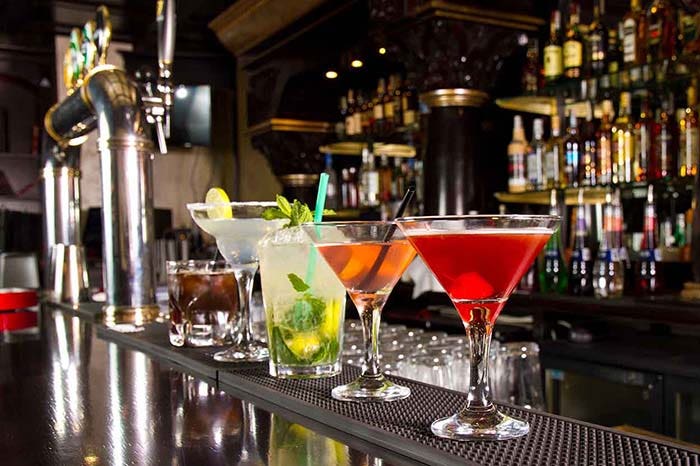

Buying cooking equipment for your bar
If your bar serves food, you'll need equipment and supplies to satisfy hungry customers. When selecting cooking equipment, consider your menu and what you'll need to prepare everything.
- Cooking equipment—Commercial ranges, charbroilers, griddles, and deep fryers are the most common items in a bar kitchen. Consider hot plates or a portable induction range if you don't need a full four or six-burner range. Countertop fryers are great alternatives to full-sized floor models, but keep in mind the volume of food you expect to fry before making a final decision.
- Commercial ovens—If you need to bake or roast items in your kitchen, a standalone oven, either a convection oven or a combi oven, is a worthwhile investment. It will save your staff from crowding around the range to use its oven all the time and allow it to be used to finish items started on the cooktop.
- Refrigeration—Reach-in refrigerators, reach-in freezers, and refrigerated prep tables are some of the most common equipment in a commercial kitchen. Walk-in coolers are great for bars selling high volumes of beer that need to be stored at low temperatures along with food. If your kitchen has limited space, worktop and undercounter refrigerators, freezers, and refrigerated chef bases are great space savers.
- Smallwares—These are easy to overlook when spending hundreds or thousands of dollars on individual pieces of equipment, but it's easier to flip a burger on that fancy griddle with a turner than your hand. You'll need items like cutting boards, knives, utensils, mixing bowls, cookware, and more for the back of the house. For the front of the house, you need plates, flatware, tabletop supplies, menu covers, serving trays, ramekins, and sauce cups.
- Food storage—You need to store prepped ingredients and food that is ready to fire. For steam tables and refrigerated prep tables, use stainless steel food pans or poly food pans with lids. Clear food storage containers, sometimes called cambros, are also popular.
- Dishwashing equipment—Your new bar needs commercial dishwashers, sinks, and accessories like bus boxes, carts, and dishwashing racks.
When buying equipment, keep the space you're working with in mind. Where is the refrigeration equipment going to be? How big is the exhaust hood, and can you fit everything you need under it? How much room do you have for your dish pit? What kind of shelving can you fit in the dry storage area? What size work tables can you have? Balancing all these needs with your budget can be one of the most challenging parts of opening a new bar.
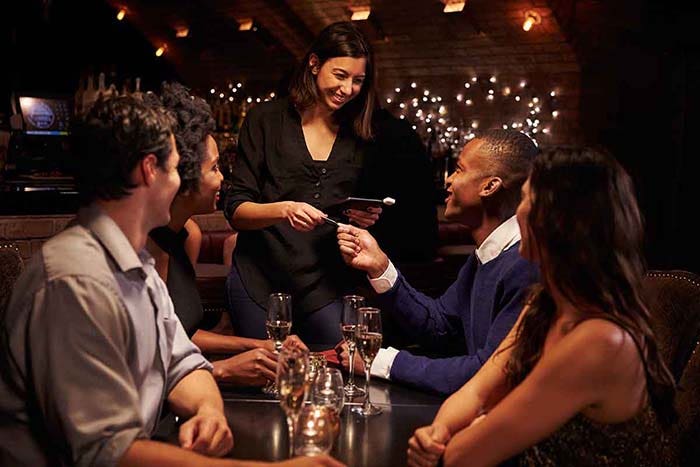

Picking a Point of Sale (POS) System
When you're selecting your bar's point of sale system, keep the following in mind:
- Inventory management—Choose a system to help track the bar's inventory, including food, liquor, beer, and wine.
- User-friendliness—Look for a system with a user-friendly interface that is easy to use and operate. The last thing you need is for your employees to struggle to use an overly complex system, which will cause customers to wait extra time for their bill or receipt.
- Integration—Some POS systems can integrate with other systems like the bar's accounting software, payment processing systems, and customer relationship management tools.
- Reporting and analytics—Find a system that provides real-time data and analytics, such as sales and inventory reports.
- Customer management—Consider a system that allows for customer tracking and management, such as storing customer information and keeping track of orders.
- Mobility—Systems that allow your staff to take orders and payments tableside will help you turn tables faster.
- Price—Like everything on this list, keep the cost in mind. With a POS, think about setup fees, ongoing subscription fees, updating fees, and payment processing fees.
- Customer support—Make sure the system you choose has reliable customer support and training. You'll thank yourself in the long run for this one.
Keep in mind your bar's specific needs and pick the best POS that meets those needs and offers the best features to help you and your employees succeed.
Popular Cocktail Recipes
Get a head start on your bar's cocktail menu with our list of classic cocktail recipes.
Cocktailing is an art form. Just because a mixed drink is a classic doesn't mean you can't put your own spin on it.
Picking Bar Entertainment Systems
What you'll need from this section will vary widely depending on the concept of your bar. Keep your target audience in mind when you decide what to include.
- Sound system—Choose a sound system suitable for your bar's size and layout. Consider factors like the number of speakers needed, sound quality, and ease of use.
- Televisions—When choosing which, if any, TVs to have in your bar, consider the number, as well as screen size, viewing angles, and mounting options.
- Projectors and screens—If you plan to host events where people will need to share information with large groups of people, consider investing in a projector system.
- Wireless microphone—A wireless mic is an excellent investment if you host events that need an MC.
- DJ equipment—If you plan to have an in-house DJ, consider purchasing equipment like mixers, speakers, and lighting effects.
Pick the proper lighting for you bar
The lighting in your bar will do a lot of the work to set the establishment's mood. When picking your lighting design, consider these factors:
- Ambiance—Lighting significantly affects the bar's atmosphere. Consider using dimmer switches, colored lights, and adjustable lighting to create different moods throughout the day. The color temperature of your lights can also go a long way toward setting the ambiance of your new bar.
- Functionality—Lighting should be bright enough to help customers see their drinks, food, and menu, but not so bright that it's uncomfortable. If your lighting is dim, you'll need task lighting for specific areas like the bar, bathrooms, and kitchen.
- Style—The lighting should complement the overall style and theme of the bar.
- Energy efficiency—LED's low energy consumption and long life make them increasingly popular.
- Safety—To reduce the risk of fires and other hazards, make sure all your lights are correctly installed and maintained.
- Maintenance—To save time and money in the long run, choose lighting fixtures that are easy to clean and maintain.
- Spotlight lighting—You may want specific lights to highlight your liquor display behind your bar or in your glass door bottle coolers or artwork on the walks.
Remember to stay within your budget while providing the ambiance, functionality, and style you want for your bar.
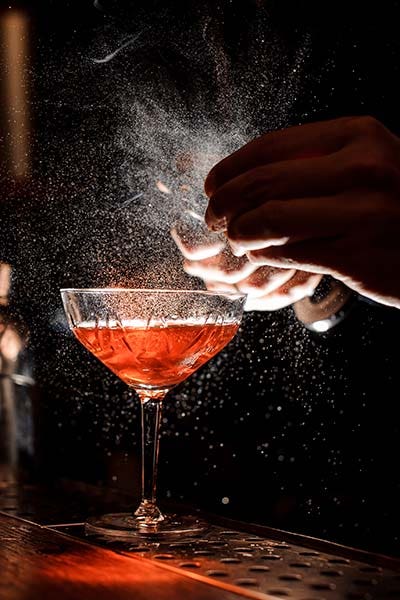

Essential factors for picking bar furniture
When picking out bar stools, booths, high-top tables, dining-height tables, chairs, and patio furniture, keep the following factors in mind.
- Comfort—Probably the most important factor on the list. If your furniture is uncomfortable, your customers will be less likely to return.
- Durability—Restaurant furniture of any kind will endure a lot of wear and tear. Choose durable materials and constructions that can withstand heavy use.
- Style—Your furniture is one of the key ways you can express your bar's theme and concept. Make sure everything works well together.
- Space—Consider the available space in the bar and choose furniture that fits comfortably. Try not to overcrowd the space and allow easy movement throughout it.
- Safety—Make sure your furniture, especially chairs and barstools, is stable and will not tip over easily.


Picking the perfect ice machine for your bar
Most bartenders will tell you ice is the real key to a bar. If you're making any drink shaken with ice or served on the rocks, the quality of your ice will affect the final product. Buying reliable, quality equipment and maintaining it is critical to the ice you make and sell. Keep the following factors in mind when selecting ice machines and bins:
- Type of ice—All ice is solid water, but it comes in different shapes and sizes. Full cube or full dice, regular cube, half cube or half dice, nugget, flake, crescent, and gourmet ice are the six common types that ice machines can manufacture. Work with the person who created your drink menu to see what type or types of ice will work best for your bar.
- Size and space—Consider the size of the ice machine and make sure you have enough space to accommodate it. Undercounter ice machines are easy to place under your bar, but you may need more than they can produce. You can also have a large-capacity ice machine somewhere else in your building and an ice bin at the bar that a bar back or busser can fill when needed.
- Water filtration system—A good water filtration system can help ensure you make clean and pure ice.
- Energy efficiency—Choose an energy-efficient model to save on electricity costs.
- Maintenance—Keep up on your ice machine's maintenance, cleaning, and sanitizing. It will keep it running longer and create better-tasting ice.
- Type of ice machine—There are three main types of ice machines. Undercounter ice machines will slide underneath your bar or other counter or table. Modular ice machines have a separate condenser that sits on top of a properly sized ice bin. Remote systems use long refrigerant lines to connect a condenser to the rest of the unit. The condenser can be outside or in a different part of the building.
- Production capacity—Choose an ice maker with a production capacity that meets your bar's needs. Factor in the drinks you serve per day and the size of your bar when deciding. If you serve food, will ice for drinks that don't come from the bar rely on the same ice machine?
Before you start making equipment and supply decisions, it's important to have a budget and menu set. That way, you know what you need and how much you can spend. If you have people in mind you'd like to hire, talk with them about what brands and styles of equipment they have experience using and what features they find helpful or didn't use at all.
Keeping all of that in mind will help you make informed decisions about what you make a successful bar.
What type of ice should you have in your bar?
Different types of ice are better for different types of drinks or food service settings. We've created a guide to help you figure out which type of ice is best for the drinks you serve and the setting you serve them.

